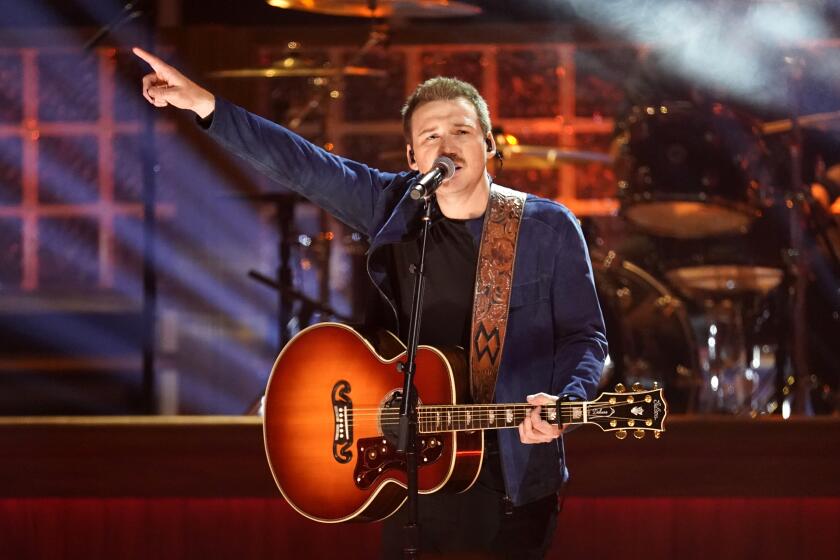Review: Architecture and sculpture in perfect union at the Schindler House
Conversations among prominent writers, musicians, architects and dancers have taken place in the Schindler House since it was built in 1921-22. Edmund de Waal’s installation on view there now makes deeply stirring conversation with the house.
R.M. Schindler, an emigré from Vienna, crafted on the West Hollywood lot a spatial experiment, a live/work space for two couples that invited collaboration and cooperation. As you move through the largely unfurnished rooms, the architecture registers as immersive sculpture. De Waal’s intervention (titled “— One Way or Other — “) heightens that experience through the addition of works in porcelain, steel and stone that draw from the same vocabulary of distillation, intimacy and rhythmic repetition. The union works on a visual as well as a visceral level. Both rigor and reprieve feel palpable.
De Waal, a writer and sculptor based in London, makes skinny, slightly irregular cylindrical ceramic vessels, glazed in a reductive palette of white, black, rich graphite and ashen gray. Some are as modest in scale as a finger, and none stands taller than 8 or so inches. He houses them — and here, especially, the metaphor resonates — in steel-framed vitrines with clear plexiglass sides, where they cluster in small groups, vaguely anthropomorphic assemblies, humble miniature forests, specimens on display.
A thick slab of plexiglass cushions each pristine, architectonic shelter from the table it sits on, so the case and its contents appear to float. The effect is elegant and perfectly attuned to the spare geometry of the house, with its concrete walls and floors, slit windows and redwood-beamed ceilings. Light enters in slim stripes and also broad planes, thanks to sliding panels that allow free passage between indoor and outdoor space. Each room, usually empty, becomes a stage for the play of shadows. This motion of change now enters into conversation with the stillness of De Waal’s sculptures.
De Waal has also introduced music to the space, including Anton Webern pieces roughly contemporaneous with the construction of the house, a contemporary cello improvisation, and a composition by Simon Fisher Turner that summons, appropriately and delightfully, the spirit of John Cage, who had some history here. Domestic and urban found sound, recorded in Vienna and London, mixes with the ambient noise of visitors and maintenance workers: keys jingle, trams clatter, footsteps beat, brooms swish. The sounds frame silences in much the same way that De Waal’s objects shape the empty space around them. He is a sculptor of intervals.
A long table in one of the rooms looks as if it could serve for work or dining, but its surface functions more like a notebook page. De Waal coated it in porcelain slip and inscribed upon it comments about the house, exile, music. The legibility varies; most of the words sink into the formerly liquid surface, and the whole serves less as a vehicle for specific ideas than as an analog of the malleable process of thought itself and the undependable archive of memory.
Schindler designed his house on North Kings Road with synergy in mind. De Waal’s engagement with the place fulfills that aim afresh, with grace and the concentrated vigor of poetry.
MAK Center at the Schindler House, 835 N. Kings Road, West Hollywood, (323) 651-1510, through Jan. 6. Closed Monday and Tuesday. makcenter.org
More to Read
The biggest entertainment stories
Get our big stories about Hollywood, film, television, music, arts, culture and more right in your inbox as soon as they publish.
You may occasionally receive promotional content from the Los Angeles Times.






